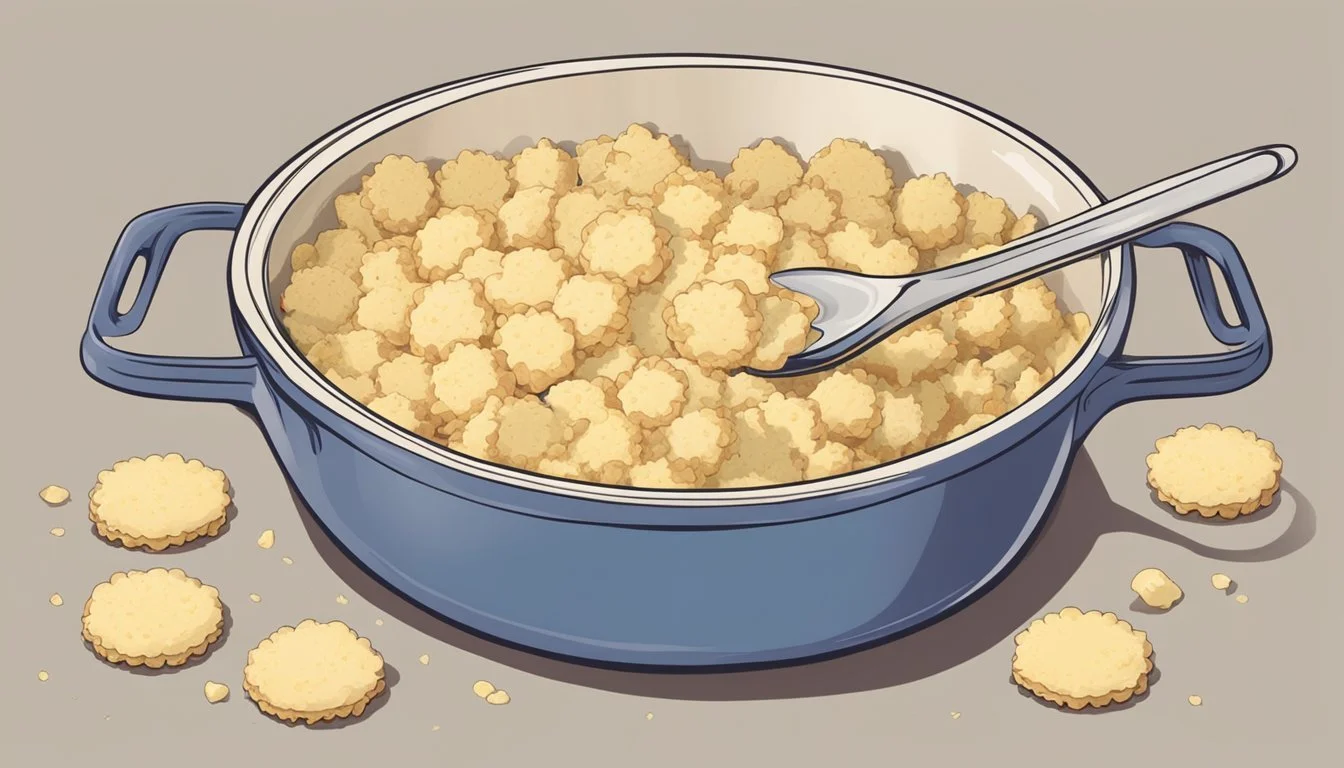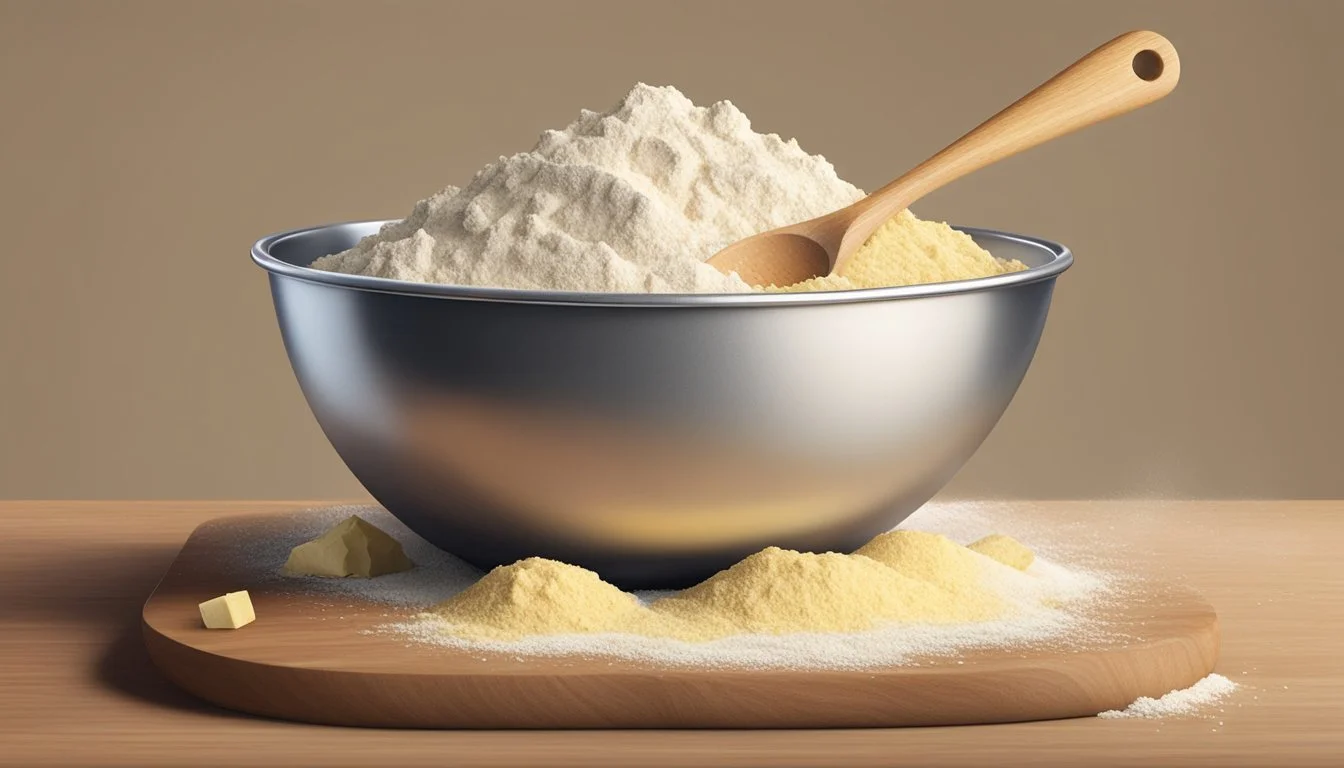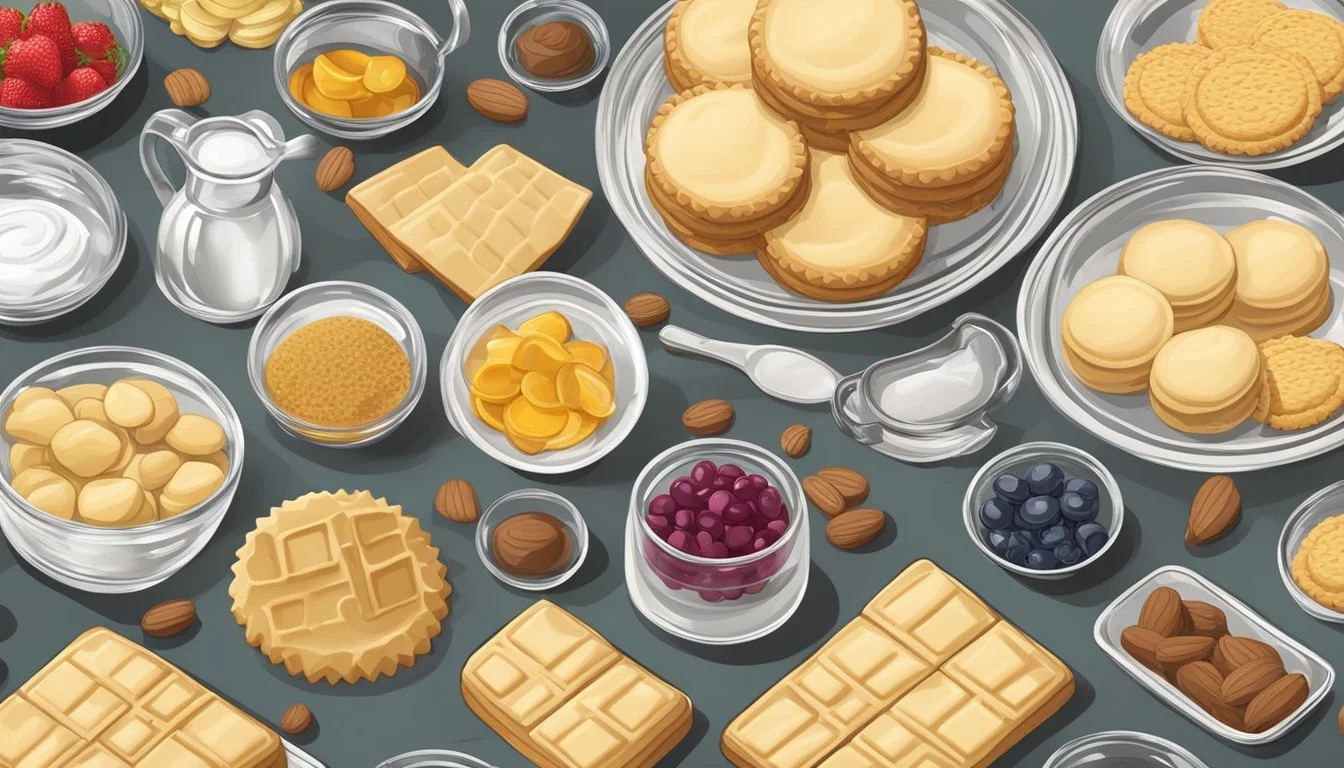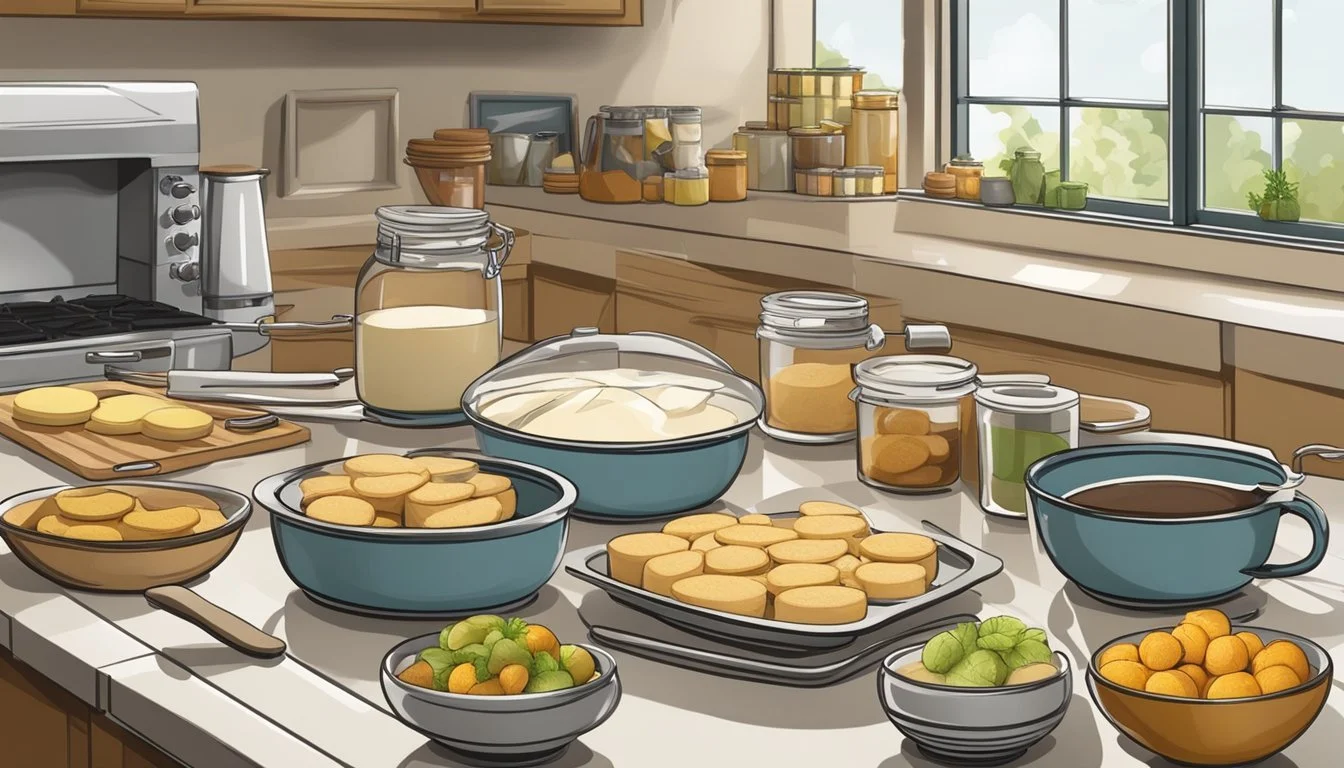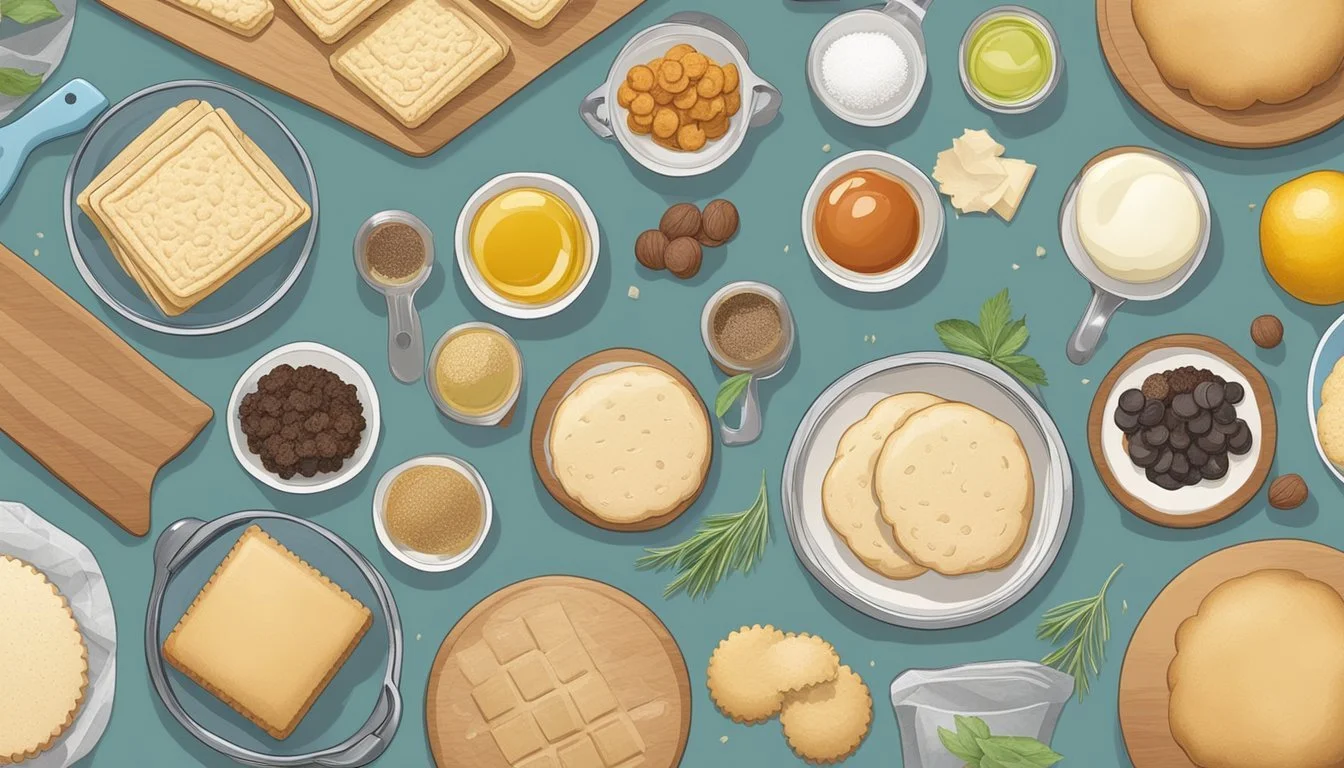How to Cook with Walkers Shortbread for Rich Dessert Bases
A Guide to Elevated Sweets
Walkers Shortbread, a staple in Scottish baking since 1898, offers a rich and buttery canvas for an array of desserts (What wine goes well with desserts?). Known for its quality and traditional recipe, this all-butter shortbread is an ideal base for creating luxurious and indulgent dessert bars. The crumbly texture of the shortbread pairs perfectly with creamy, caramel, and chocolate layers, leading to a symphony of flavors that makes simple desserts seem elaborate.
Cooking with Walkers Shortbread provides an ease of convenience while adding a touch of class to any homemade treat. By starting with a pre-made shortbread base, bakers can focus on crafting the rich toppings that transform a basic biscuit into a decadent dessert. Whether one is crushing the Walkers Shortbread for a sturdy crust or using the fingers whole as a foundation for toppings, the resulting desserts are both versatile and reliably delicious.
The process for creating a dessert with Walkers Shortbread begins by establishing a firm base, often involving crumbling the shortbread to form a crust or neatly arranging the fingers in a tray. This base then sets the stage for layers of smooth caramel, chocolate, or fruit preserves. With simple ingredients and straightforward techniques, Walkers Shortbread proves to be an excellent starting point for anyone looking to create a rich dessert that impresses.
Understanding Shortbread as a Base
Shortbread provides a delectably crumbly texture and rich buttery flavor, making it an ideal foundation for various desserts. By incorporating this versatile component, one can elevate the base of any sweet creation.
The Basics of Shortbread
Shortbread is a traditional Scottish confection typically composed of three core ingredients: butter, sugar, and flour. The high butter content grants shortbread its signature melt-in-the-mouth feel, while the sugar adds a subtle sweetness and the flour binds everything together.
Ingredients:
Butter: Essential for the rich flavor and tender texture.
Sugar: Adds sweetness and can influence the texture; granulated sugar for a finer crumb, confectioners' sugar for a more delicate bite.
Flour: Provides structure; often plain or all-purpose flour is used.
The mixture yields a dough that is pressed into a mold or pan before baking at a low temperature, ensuring a dry, crumbly texture without browning too much.
Benefits of Using Shortbread for Dessert Bases
Shortbread cookies serve as an excellent base for dessert bars and layered sweets due to their sturdy yet tender consistency. Here are a couple of key benefits:
Sturdiness: Shortbread maintains structure under layers of creamy or fruity toppings without becoming soggy.
Flavor Compatibility: Its buttery profile pairs well with various flavors from rich chocolate to tart fruit preserves, offering a balanced taste experience.
Walkers Shortbread, a renowned brand known for its traditional Scottish shortbread, embodies these qualities. By using Walkers Shortbread as an easy shortcut for a base, one can skip the mixing and baking, heading straight to creating indulgent multi-layered desserts.
Preparation of Shortbread Base
The preparation of a shortbread base involves meticulously blending the right ingredients, shaping the dough into a desired form, and carefully baking it to create a rich, buttery foundation for various desserts.
Mixing the Ingredients
To begin, one needs to crush Walker's Shortbread fingers to a fine crumb consistency, which can be achieved using a food processor or by placing them in a zip-top bag and using a rolling pin. The resulting crumbs should then be transferred to a mixing bowl. Next, melted unsalted butter is poured into the bowl with the shortbread crumbs. Using a fork, one should mix the butter and crumbs until they are evenly combined to form the shortbread crust mixture.
Shaping and Chilling
Once the mixture is ready, it's time to shape the base. This involves pressing the mixture firmly into the bottom of a baking pan that has been lined with parchment paper. This ensures an easy release once the base is baked. For a firm and solid base, it's essential to chill the shaped crust. One can place the pan in the fridge for about 30 minutes or in the freeze for a shorter duration until the crust is firm to the touch.
Baking the Base
With the shortbread crust chilled and firm, it's now prepared for bake. Preheat the oven to the temperature directed by the dessert recipe — commonly around 350°F (175°C). Pierce the base with a fork to prevent air pockets from forming during the baking process. The crust should be baked until lightly golden, ensuring a rich taste and sturdy base upon which to build additional layers. After baking, allow the base to cool before adding any toppings or fillings.
Enriching the Base with Flavors and Textures
Walkers Shortbread provides a rich and buttery foundation for desserts that can be augmented with additional flavors and textures. From the crunch of nuts to the creamy decadence of chocolate, these enhancements can transform the classic shortbread into a complex base for various desserts.
Incorporating Nuts and Caramel
Ingredients:
Walkers Shortbread
Chopped nuts (e.g., pecans)
Caramel sauce or caramel squares
One can begin by adding chopped pecans to the crumbled Walkers Shortbread for an added crunch. For a gooey sweetness, chefs can drizzle caramel sauce over the shortbread or melt caramel squares and blend them directly into the shortbread mix. This combination is a nod to the famous Millionaire Shortbread Bars, known for their rich layers and delicate balance of flavors.
Adding Chocolate Layers
Ingredients:
Walkers Shortbread
Melted dark chocolate
To incorporate chocolate, one can pour a layer of melted dark chocolate over the shortbread base and let it set. The intensity of high-quality dark chocolate pairs well with the buttery flavor of the shortbread. Once set, this layer not only adds flavor but also a satisfying texture contrast to the base.
Creating Variations
Ingredients:
Walkers Shortbread
Various additions (e.g., powdered sugar, granulated sugar, salted butter, etc.)
Creating variations involves experimenting with different types of sugar such as using powdered sugar for a smoother consistency or granulated sugar for a more textured feel. Salted butter can be used in the shortbread mix to offset sweetness and enhance the overall taste. By adjusting these components, chefs can tailor the shortbread base to suit any dessert profile.
Serving and Preserving Shortbread Desserts
When incorporating Walkers Shortbread into rich desserts, achieving neat presentation and maintaining freshness are vital. This entails skillful cutting and optimal storage conditions.
Cutting and Presenting
Cutting desserts made with shortbread requires a sharp knife to ensure clean edges and maintain the dessert's structure. Chilled desserts tend to keep their shape better when cut, allowing for a neater presentation. For desserts set with layers or fillings, a knife heated in warm water can slice through cleanly without dragging. After slicing, serving the desserts on a wire rack can prevent sogginess by allowing air circulation.
Storage Recommendations
Shortbread desserts should be stored in such a way that they retain their fresh taste and texture. An airtight container is optimal for keeping out moisture and preserving the dessert's integrity for several days at room temperature. If a dessert is particularly moist or contains perishable toppings or fillings, it's safer to refrigerate it, where it can typically last up to one week. For long-term storage, desserts can often be frozen. Wrapping individual portions tightly in plastic wrap and then placing them in airtight containers protects them from freezer burn and extends their shelf life for several months. Always make sure desserts are fully cooled before storing to prevent condensation.
Recipe Ideas Using Walkers Shortbread
Walkers Shortbread provides a buttery and crumbly base that enriches desserts, from classic tarts to decadent cheesecakes and luxurious millionaire bars. Utilizing the all-butter quality of Walkers Shortbread, these recipes introduce a dimension of texture and taste that complements various sweet fillings.
Classic Walkers Shortbread Tart
A Classic Walkers Shortbread Tart begins with a foundation of crushed Walkers Shortbread fingers for the crust, creating a rich and delicious base that pairs exquisitely with a velvety cream filling. One can enhance the tart by adding fresh fruit or a layer of flavored ganache. This versatile base sets the stage for a wide range of toppings, making it not only a delightful dessert option but also a visually stunning centerpiece for afternoon tea.
Walkers Shortbread Cheesecake Base
Transforming a simple cheesecake into an extraordinary treat begins with a Walkers Shortbread Cheesecake Base. Substitute the traditional graham cracker crust with a crumbly layer made from Walkers Shortbread cookies. This easy switch introduces a buttery flavor that elevates the cheesecake's richness. The simplicity of this base allows for myriad variations, such as adding a swirl of fruit compote or a drizzle of caramel for those who crave extra sweetness.
Millionaire Bars with Walkers Shortbread
For a truly indulgent dessert, one must try creating Millionaire Bars with Walkers Shortbread. By layering rich caramel and silky dark chocolate atop a solid Walkers Shortbread base, these bars offer a sublime blend of textures and flavors. They are a no-bake delight, making them an easy yet sophisticated addition to a Christmas cookie selection or a casual coffee break. This recipe promises a dessert that feels both classic and contemporary.
Nutritional Insights and Dietary Considerations
When utilizing Walker's Shortbread as a base for rich desserts, it is crucial to account for both its indulgent taste and its nutritional composition.
Understanding the Caloric and Nutrient Content
Walker's Shortbread cookies contain approximately 170 calories per two-cookie serving. In terms of macronutrients, they consist of 47% fat, predominantly saturated fat, 49% carbohydrates, and a modest 5% protein. These traditional cookies are made with all-purpose flour, butter, and sugar, contributing to their rich flavor and dense texture. It is important to note, however, that they lack significant amounts of fiber, vitamins, and minerals such as calcium, potassium, vitamin A, and iron. Desserts made with this shortbread will inherit its caloric density and should be enjoyed in moderation, particularly by those monitoring their intake for cholesterol or sodium.
Gluten-Free and Vegan Alternatives
For individuals with dietary restrictions, such as a gluten intolerance or those following a vegan lifestyle, the conventional Walker's Shortbread recipe may not be suitable. However, one can find substitutes that mimic the texture and taste of traditional shortbread while aligning with these dietary requirements. Gluten-free alternatives should employ a gluten-free all-purpose flour blend, and vegan recipes may replace butter with plant-based alternatives. Utilizing these substitutes allows individuals to enjoy similar rich dessert bases without straying from dietary guidelines. The nutritional profile of these alternative bases can vary, but they typically offer similar calories per serving, and the vegan options tend to have less saturated fat and no cholesterol.
Tips and Tricks for Perfect Shortbread Desserts
Creating desserts with Walkers Shortbread as a base involves understanding how to achieve the right texture, using proper baking techniques, and avoiding common mistakes. Mastery of these elements ensures a delightful dessert experience.
Achieving the Right Texture
- Room Temperature Ingredients: For a tender shortbread, ensure all ingredients, especially fat, are at room temperature. This aids in creating a uniform texture through easier blending. - Pressing Techniques: When forming a crust or base, it's essential to press the Shortbread crumbs evenly into the pan. Some recipes suggest using the bottom of a measuring cup or the back of a spoon for a consistent layer.
Proper Baking Techniques
- Preheat the Oven: Always start with a preheated oven to ensure that your shortbread desserts are baked evenly. Recipes will specify the ideal temperature, which often ranges around 350°F (175°C). - Prep and Cook Time: Adhering to the suggested prep and cook times within a recipe card is crucial. Shortbread should be baked until it's golden brown, which typically doesn't exceed beyond 20 minutes. - Sharp Knife for Cutting: When dividing baked shortbread, using a sharp knife helps to achieve neat, clean cuts without crumbling the delicate texture.
Common Mistakes to Avoid
- Overworking the Dough: Over-mixing the dough can lead to tough desserts. Only whisk or mix until the ingredients are just combined. - Avoid Over-browning: Keep a vigilant eye during the final minutes of baking, as shortbread can quickly go from perfectly golden brown to overly darkened. - Storing Method: To keep shortbread cookies crisp, store them in an airtight container, and if freezing, place them in a freezer bag with an overhang to protect against freezer burn.

